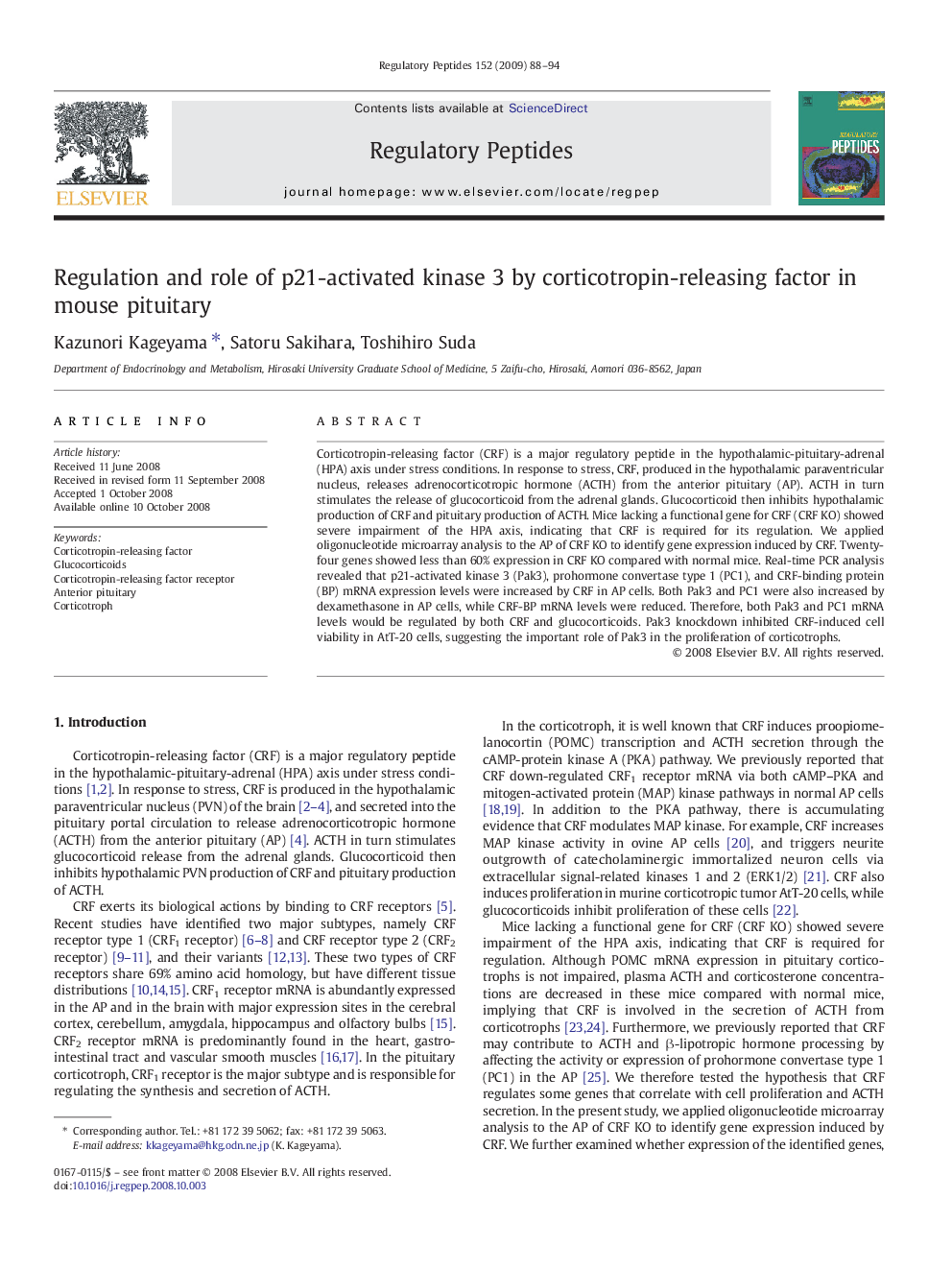| Article ID | Journal | Published Year | Pages | File Type |
|---|---|---|---|---|
| 2023075 | Regulatory Peptides | 2009 | 7 Pages |
Abstract
Corticotropin-releasing factor (CRF) is a major regulatory peptide in the hypothalamic-pituitary-adrenal (HPA) axis under stress conditions. In response to stress, CRF, produced in the hypothalamic paraventricular nucleus, releases adrenocorticotropic hormone (ACTH) from the anterior pituitary (AP). ACTH in turn stimulates the release of glucocorticoid from the adrenal glands. Glucocorticoid then inhibits hypothalamic production of CRF and pituitary production of ACTH. Mice lacking a functional gene for CRF (CRF KO) showed severe impairment of the HPA axis, indicating that CRF is required for its regulation. We applied oligonucleotide microarray analysis to the AP of CRF KO to identify gene expression induced by CRF. Twenty-four genes showed less than 60% expression in CRF KO compared with normal mice. Real-time PCR analysis revealed that p21-activated kinase 3 (Pak3), prohormone convertase type 1 (PC1), and CRF-binding protein (BP) mRNA expression levels were increased by CRF in AP cells. Both Pak3 and PC1 were also increased by dexamethasone in AP cells, while CRF-BP mRNA levels were reduced. Therefore, both Pak3 and PC1 mRNA levels would be regulated by both CRF and glucocorticoids. Pak3 knockdown inhibited CRF-induced cell viability in AtT-20 cells, suggesting the important role of Pak3 in the proliferation of corticotrophs.
Keywords
Related Topics
Life Sciences
Biochemistry, Genetics and Molecular Biology
Biochemistry
Authors
Kazunori Kageyama, Satoru Sakihara, Toshihiro Suda,
